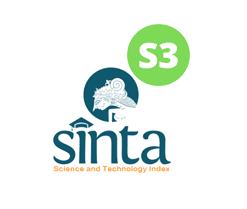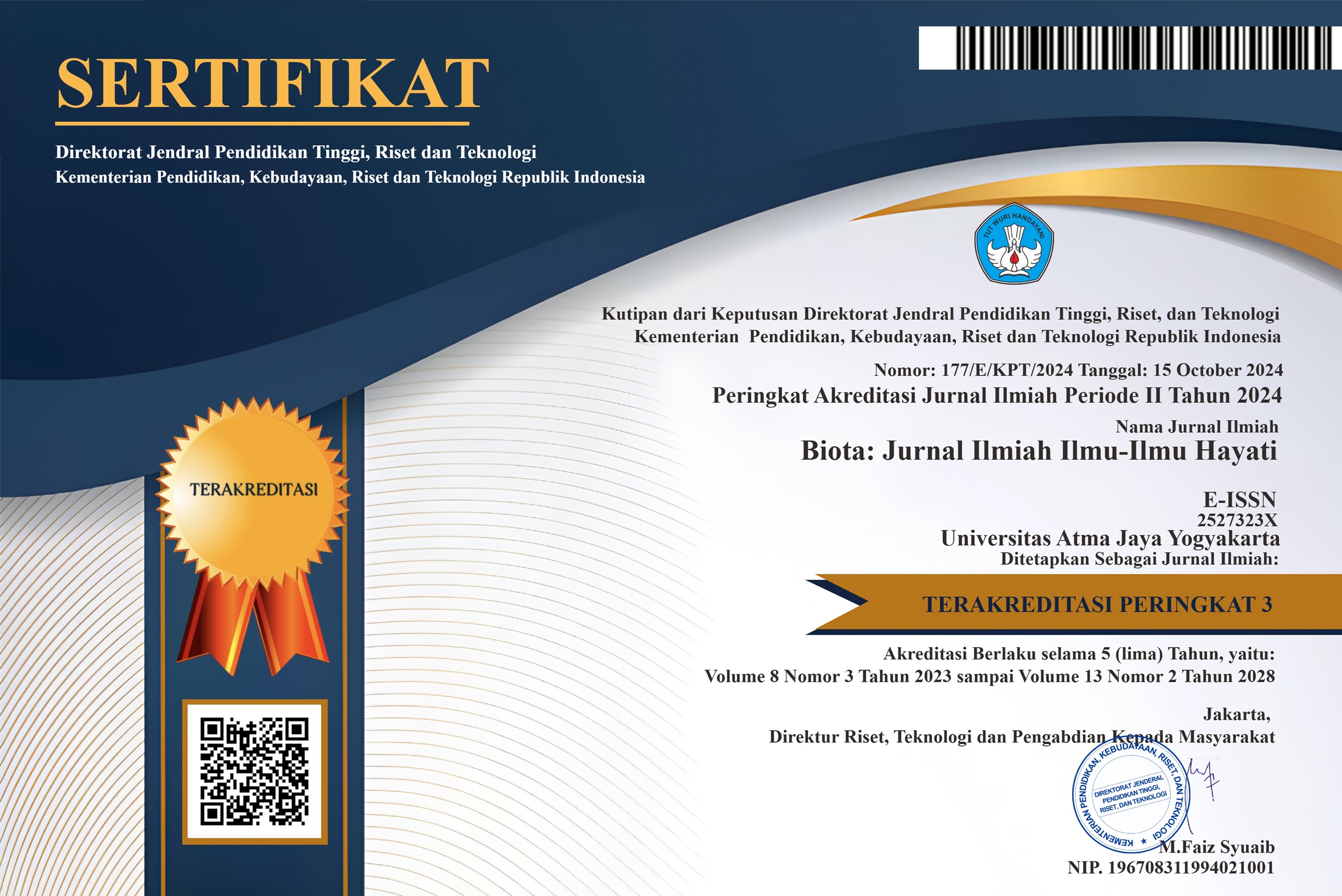Induksi Pembungaan Rambutan dengan Aplikasi Paklobutrazol
DOI:
https://doi.org/10.24002/biota.v10i2.2845Keywords:
paclobutrazol, rambutan, flowering, chlorophyll contentAbstract
Rambutan fruit have a great potential to be developed as an exported commodity. The constraint is the existence of biannual bearing characteristic of the plant, which is an alternation of fruit yield between on year and off year. This condition resulted in a problem in product availability continuity. The aim of this research was to induce rambutan plant flowering in the off year with the application of paclobutrazol. There were three doses of paclobutrazol treatment including 0 g/tree, 1.5 g/tree, and 3 g/tree. Bud dormancy as an implication of paclobutrazol application were broken by the application of KNO3 at 20 g/l concentration. The experiment was arranged in completely randomized factorial design 3X2 in triplicate. The result showed that paclobutrazol treatment was able to induce rambutan flowering in the off year. Paclobutrazol treatment significantly increased the number of generative buds. Based on the generative bud percentage, the higher doses of paclobutrazol application the stronger stimulus of flowering. Paclobutrazol treatment also reduced the inflorescences length and increased the chlorophyll content of the flowering support leaves. It seems that application at dose 3 g/tree caused bud dormancy but dose 1.5 g/tree did not. Bud dormancy as a result of paclobutrazol application could be broken by the KNO3 application. The optimum dose to induced rambutan flowering was 1.5 g/tree because this dose seems did not caused bud dormancy and gave a higher number of generative buds compared to 3 g/tree dose.
Downloads
Published
How to Cite
Issue
Section
License
Authors who publish with Biota : Jurnal Ilmiah Ilmu-Ilmu Hayati agree to the following terms:
- Authors retain copyright and grant the Biota : Jurnal Ilmiah Ilmu-Ilmu Hayati right of first publication. Licensed under a Creative Commons Attribution-NonCommercial 4.0 International License that allows others to share the work with an acknowledgment of the work's authorship and initial publication in this journal.
- Authors are able to enter into separate, additional contractual arrangements for the non-exclusive distribution of the journal's published version of the work (e.g., post it to an institutional repository or publish it in a book), with an acknowledgment of its initial publication in Biota : Jurnal Ilmiah Ilmu-Ilmu Hayati, and as long as Author is not used for commercial purposes.












